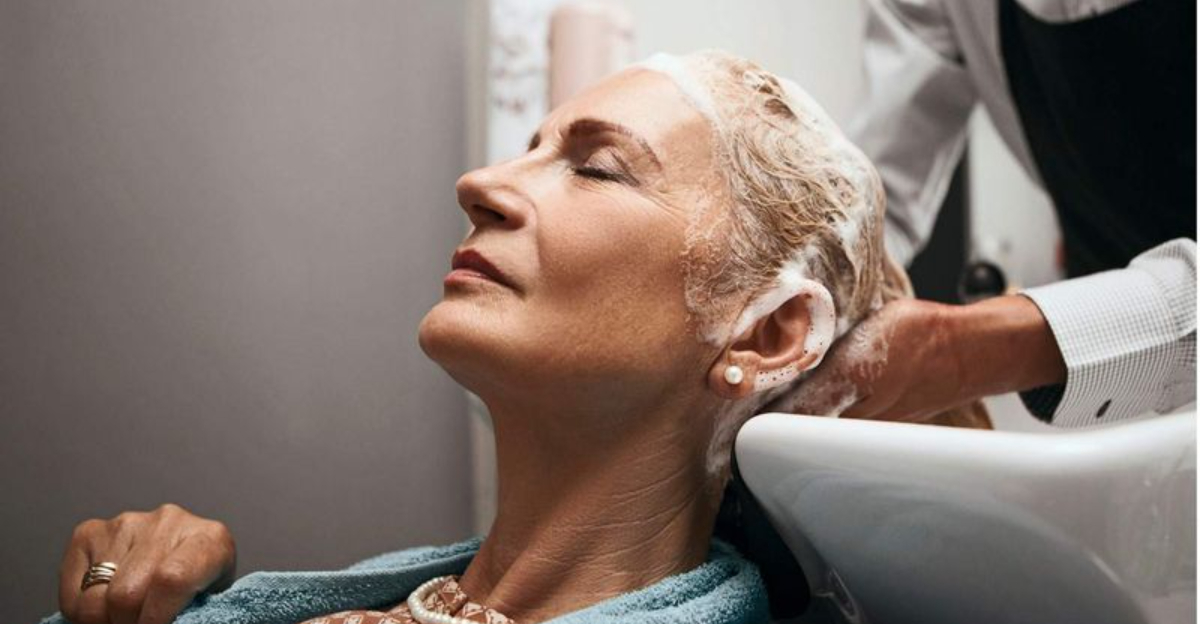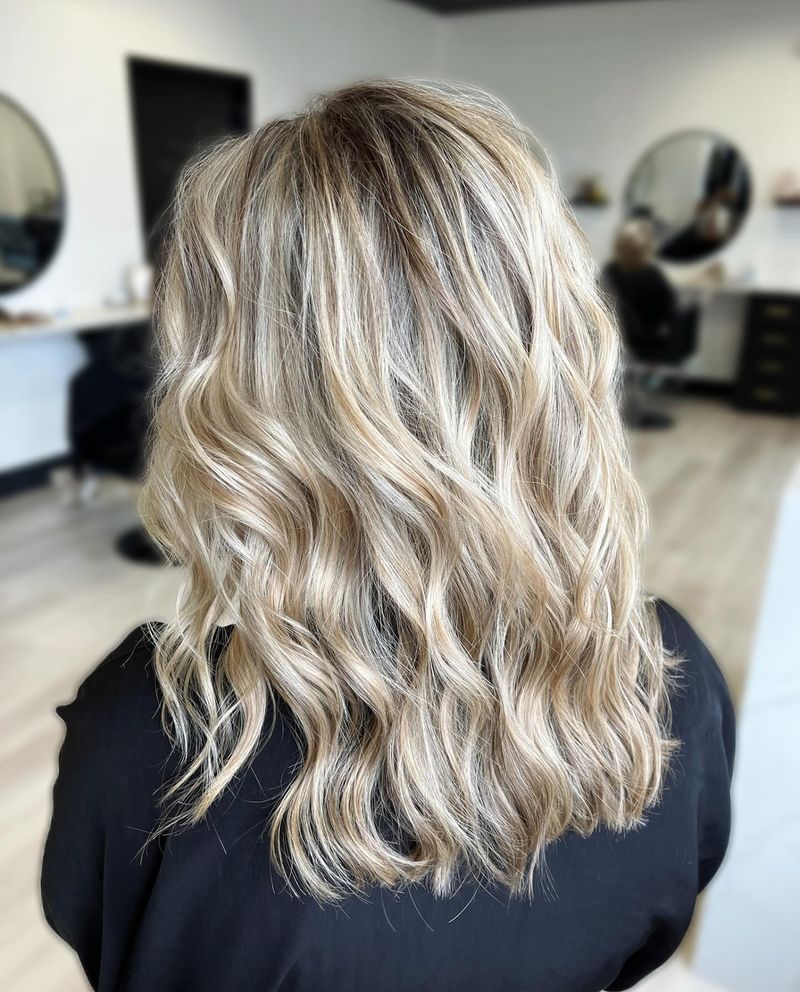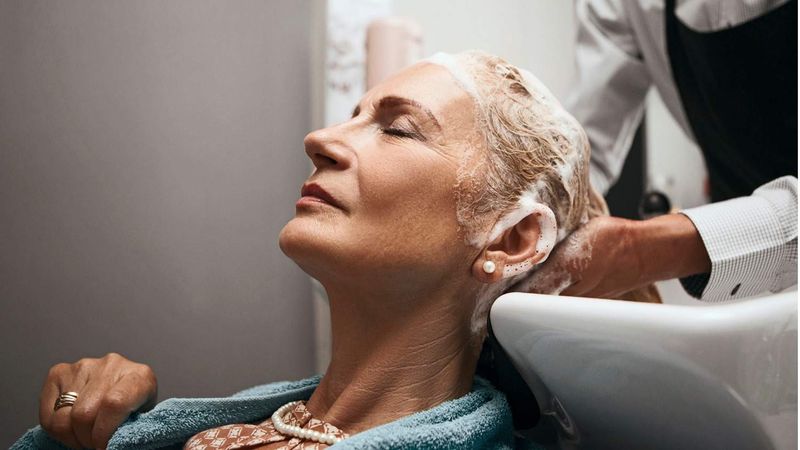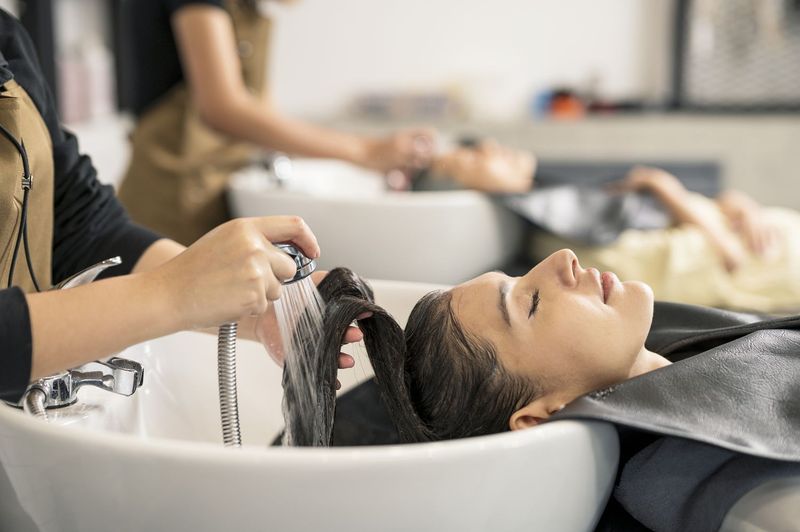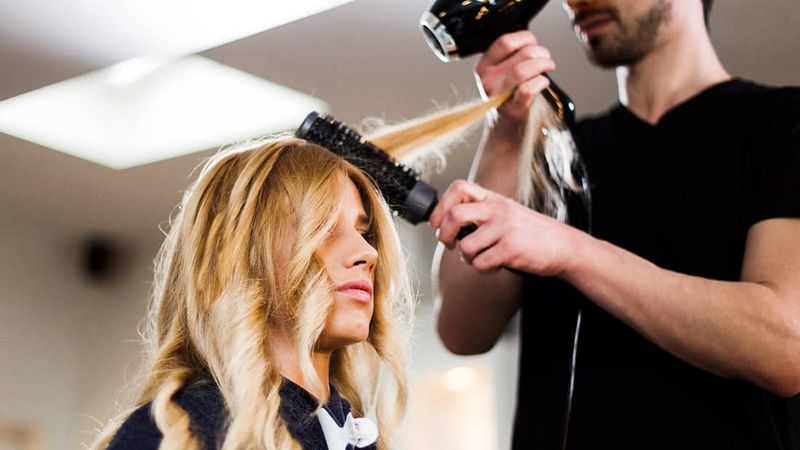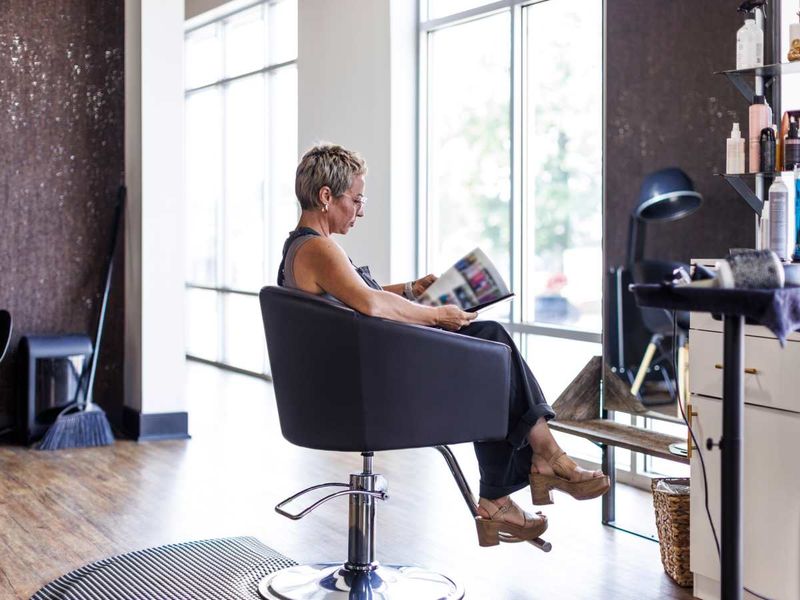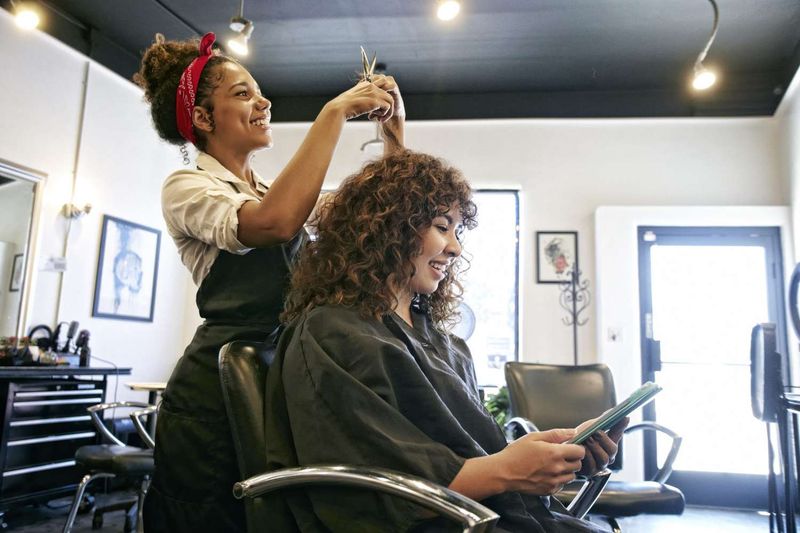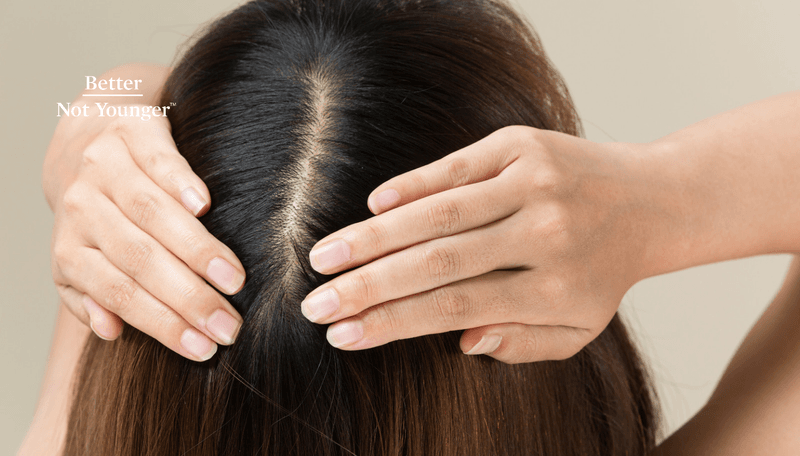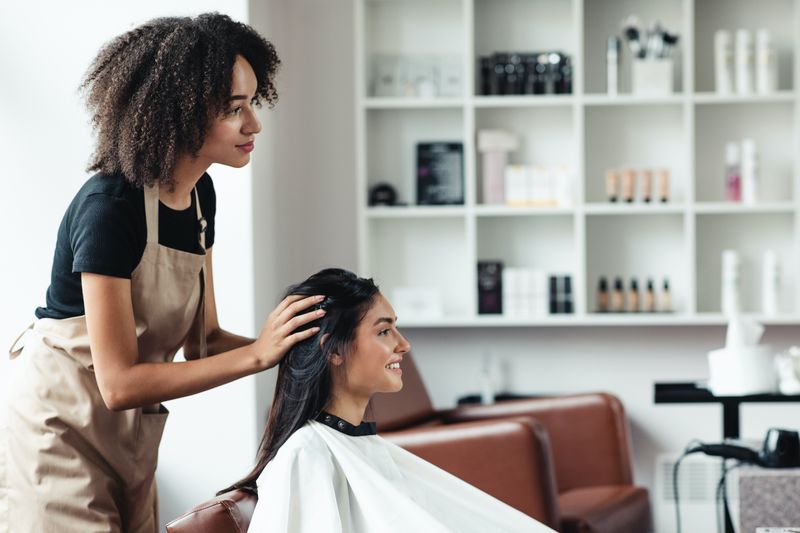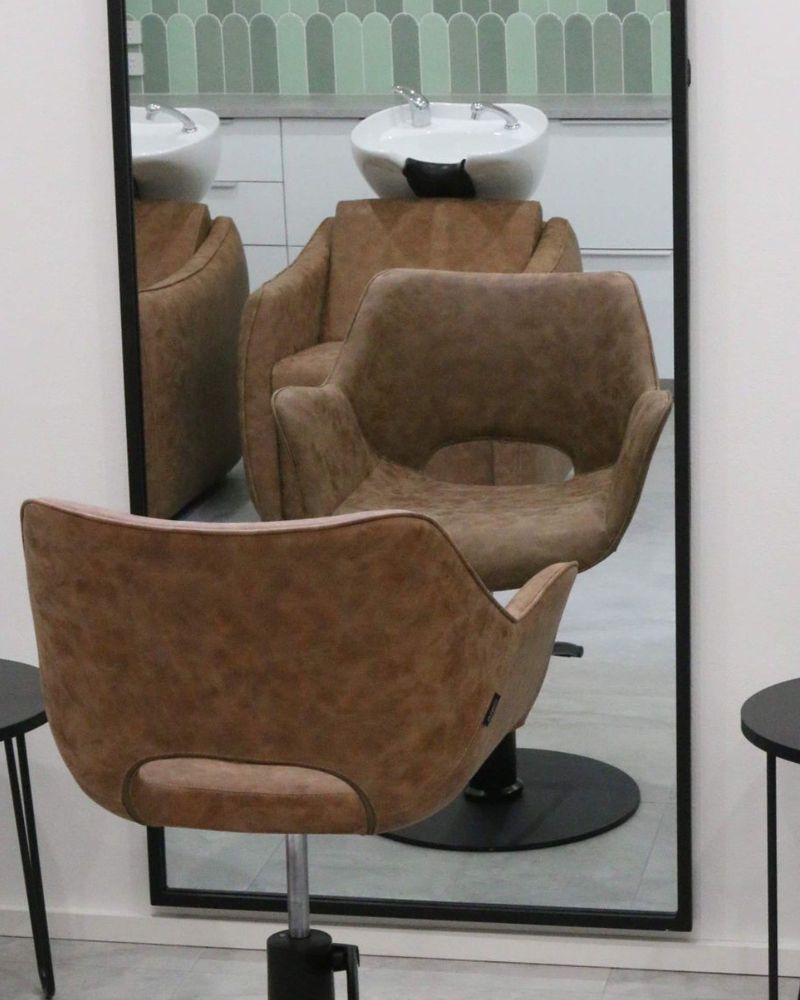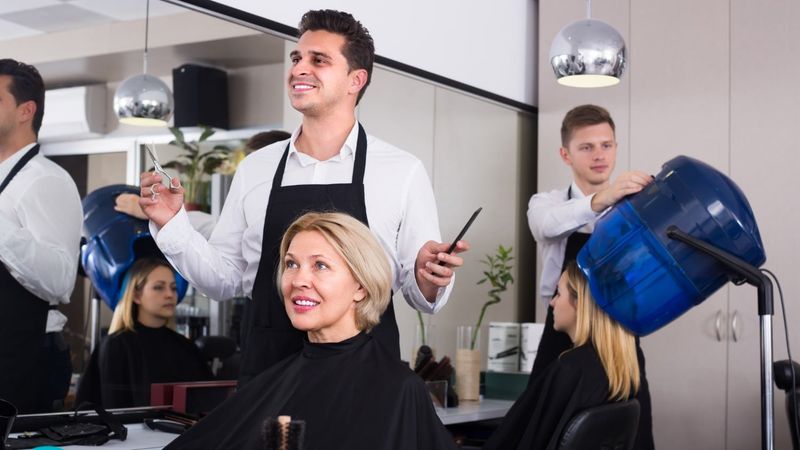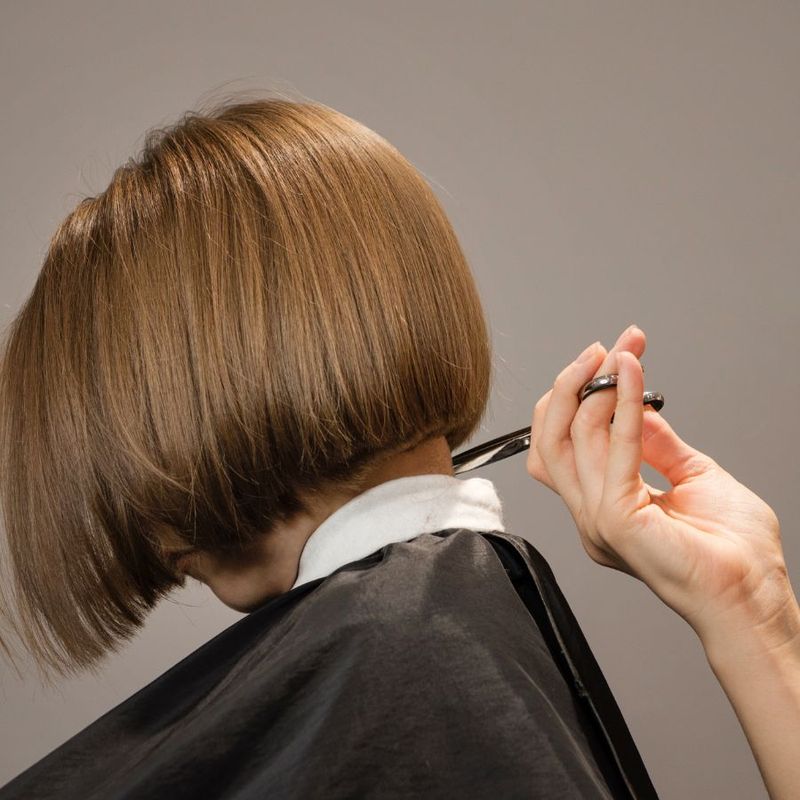Visiting the hair salon should be a relaxing experience, but sometimes those unwritten rules can cause unnecessary stress. For women over 50, navigating salon etiquette comes with its own set of considerations that nobody talks about openly. Understanding these unspoken guidelines can make your salon visit more enjoyable while ensuring you get exactly what you want from your stylist.
1. Arrive With Clean Hair (Usually)
Many stylists prefer working with hair that hasn’t been freshly washed. Product buildup and natural oils actually help color adhere better, contrary to what you might think. Ask your stylist about their preference when booking your appointment.
For women over 50 with fine or thinning hair, slightly dirty hair can provide more volume and texture for styling. However, if you use heavy products or have an oily scalp, a gentle wash the night before might be the perfect compromise.
Related: -7 Straight-Hair Problems No One Talks About And 8 Easy Fixes That Shine
Just remember – there’s no need to scrub your scalp raw the morning of your appointment. Your stylist will let you know if a wash is part of the service.
2. Bring Photos of Styles You Like
Pictures truly speak louder than words when communicating your desired look. Collect images of styles you admire, particularly on women with similar face shapes and hair textures as yours. This visual reference eliminates confusion and sets realistic expectations.
Magazine clippings work fine, but most stylists appreciate seeing photos on your phone that you can zoom in on. Save several angles of the same style if possible – front, side, and back views provide the complete picture.
Remember that bringing photos doesn’t mean an exact replica is possible, but it gives your stylist a clear direction for achieving a look that suits you.
3. Be Honest About Your Maintenance Routine
Stylists appreciate candor about how much time you actually spend on your hair each morning. That pixie cut might look fabulous, but if you never use styling products, it could become a daily struggle.
Many women over 50 prefer lower-maintenance styles that still look polished. Your honest assessment of whether you’ll use hot tools, how often you wash your hair, and which products you’re willing to apply helps your stylist create something that works with your lifestyle.
The perfect hairstyle isn’t just about how it looks walking out of the salon—it’s about how easily you can recreate it yourself day after day.
4. Respect the Appointment Schedule
Arriving 5-10 minutes early allows time for checking in and getting comfortable. Salons operate on tight schedules, and your tardiness affects everyone after you. If you’re running late, a quick call shows consideration for your stylist’s time.
Many women don’t realize that rushing a color service due to late arrival can compromise results. Those precise timing requirements for processing aren’t arbitrary – they ensure optimal color development for mature hair, which often requires more attention.
Similarly, if you need to cancel, giving 24-48 hours notice allows the salon to fill your spot, maintaining their business flow while giving another client an opportunity.
5. Turn Down the Volume on Personal Calls
Salon environments thrive on conversation and connection. Taking loud personal calls disrupts not only your service but also creates an uncomfortable atmosphere for everyone nearby. If you must take a call, speak quietly or step outside briefly.
For many women over 50, salon time serves as precious self-care. Staying present allows you to fully enjoy this experience rather than dividing your attention. Your stylist can provide better service when you’re engaged in the process.
Consider setting your phone to vibrate and checking it only during natural breaks in your service. Most matters can wait an hour or two while you focus on yourself.
6. Be Clear About Gray Coverage Expectations
Gray hair has different needs than pigmented hair, requiring specific coloring techniques. Communicate exactly how much gray coverage you want – whether full coverage, blending, or embracing your silvers completely. This clarity prevents disappointing results.
Some women over 50 prefer subtle highlighting to blend grays rather than all-over color, creating a more natural transition. Others want complete coverage without a hint of silver showing through. Neither approach is wrong – it’s entirely personal preference.
Remember that maintenance schedules differ based on your choice. Full coverage might require touch-ups every 3-4 weeks, while blending techniques can extend to 6-8 weeks between appointments.
7. Speak Up If You’re Uncomfortable
Your comfort matters during salon services. If the water temperature feels too hot during your shampoo, the chair position strains your neck, or the blow dryer heat burns your scalp, speak up immediately. Most stylists appreciate knowing how to adjust for your comfort.
Women over 50 sometimes experience increased scalp sensitivity or neck issues that younger clients might not face. Mentioning these concerns before your service begins allows your stylist to make accommodations.
Don’t suffer in silence thinking you’re being difficult. A good stylist wants you comfortable throughout your visit and will gladly make adjustments to ensure your experience remains pleasant.
8. Understand That Tipping Is Expected
Gratuity remains a significant portion of stylist income, with 15-20% being standard for most services. Many clients don’t realize they should also tip assistants who shampoo or blow-dry separately, usually $5-10 depending on service level.
During holiday seasons, consider a more generous tip or small gift to show appreciation for year-round service. Your stylist likely remembers your preferences, works around your schedule, and makes special accommodations for your needs.
If you’re unsure about tipping protocol at a particular salon, discreetly ask the receptionist when scheduling. Most salons have specific guidelines they’re happy to share, removing any awkwardness during checkout.
9. Bring Your Reading Glasses
Color charts, style books, and product labels feature surprisingly small print. Having your reading glasses readily available prevents squinting, miscommunication, or agreeing to something you can’t properly see. This simple preparation avoids potential disappointment with your results.
Many salons keep style books or tablets with inspiration photos that you’ll want to examine clearly. Being able to see details in these references helps you articulate exactly what elements you like or dislike about particular styles.
Your glasses also help when reviewing the bill or calculating the tip at the end of your service. Nothing ruins a relaxing salon experience like struggling to read important information while others wait.
10. Be Realistic About Hair Changes
Dramatic transformations often require multiple appointments, especially for mature hair. Going from dark brown to platinum blonde in one session can severely damage already delicate hair. Trust your stylist when they recommend a gradual approach.
Hair density and texture change with age, affecting what styles work best. A photo of a voluminous style on someone with naturally thick hair might not translate well to finer hair without significant styling products and time.
Good stylists will honestly tell you what’s possible rather than promising unrealistic results. Their caution comes from professional knowledge and concern for your hair’s health, not from lack of skill or willingness to try something new.
11. Mention Health Changes That Affect Your Hair
Medications, hormonal shifts, and health conditions significantly impact hair texture and color absorption. Informing your stylist about recent health changes helps them adjust techniques and product selections accordingly. This information stays confidential while improving your results.
Many women experience thyroid issues, which can make hair more resistant to color or more prone to breakage. Similarly, certain blood pressure medications might affect how your scalp reacts to chemicals. Mentioning these factors isn’t complaining – it’s providing crucial information.
Your stylist isn’t your doctor, but their expertise includes understanding how different health factors influence hair behavior. This knowledge allows them to customize your service for optimal results despite changing conditions.
12. Communicate About Sensitive Scalp Issues
Mature scalps often become more sensitive to chemicals and heat. Mentioning tenderness, dryness, or previous reactions before your service begins allows your stylist to select gentler products and techniques. This proactive approach prevents uncomfortable situations during your appointment.
Some women find that color formulations that worked perfectly for decades suddenly cause irritation after menopause. This common occurrence relates to hormonal changes affecting skin sensitivity. Patch tests before full application can identify potential problems.
Consider bringing your own sulfate-free shampoo if you’ve found commercial salon products too harsh. Most stylists accommodate this request without offense, understanding that your comfort and scalp health take priority.
13. Don’t Bring an Entourage
Salon chairs and waiting areas accommodate limited numbers comfortably. Bringing multiple companions creates crowding that affects other clients and stylists. If you need moral support for a major change, consider bringing just one trusted friend.
Many women over 50 appreciate the salon as peaceful me-time away from daily responsibilities. Extra voices offering opinions can create confusion rather than clarity about what you truly want. Your stylist needs to hear your preferences, not a committee’s varied suggestions.
If you must bring someone due to mobility or transportation needs, choose someone who understands when to offer input and when to simply enjoy their own magazine or phone while you receive your service.
14. Ask About Product Recommendations Without Pressure
Stylists genuinely know which products work best for mature hair types. When they suggest specific items, they’re usually sharing professional knowledge rather than just meeting sales quotas. Ask questions about why they recommend certain products for your particular needs.
Feel comfortable saying, “I’ll think about it” if you’re not ready to purchase. Most stylists understand budget considerations and won’t take offense. Alternatively, request samples when available to test products before committing to full-size versions.
Consider purchasing at least occasional products from your salon as a way to support their business. These professional-grade formulations often contain higher concentrations of active ingredients than drugstore alternatives, potentially offering better results for mature hair.
15. Schedule Regular Maintenance Cuts
Hair thins and changes texture with age, making regular trims essential for maintaining shape and health. Booking your next appointment before leaving the salon ensures you maintain optimal intervals between cuts, typically 6-8 weeks for most styles.
Many women notice that styles that once lasted months now require more frequent maintenance as hair density changes. This isn’t your stylist trying to generate more business – it’s a necessary adjustment to accommodate how differently mature hair behaves.
Consider scheduling standing appointments if you have a consistent routine. This practice guarantees your preferred time slot with your favorite stylist while creating a predictable self-care rhythm in your calendar.

